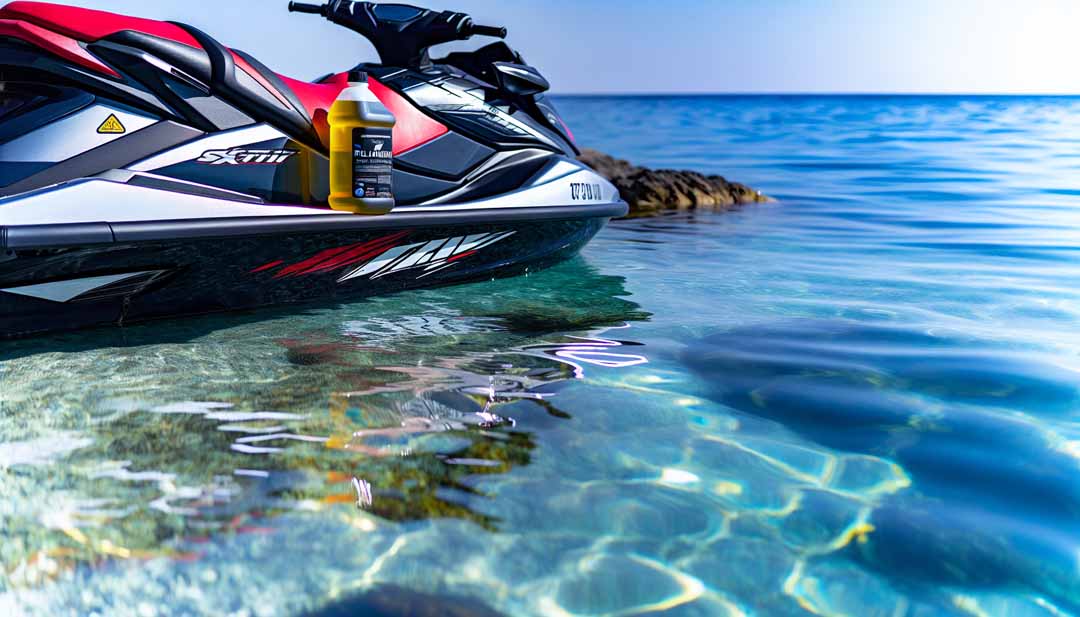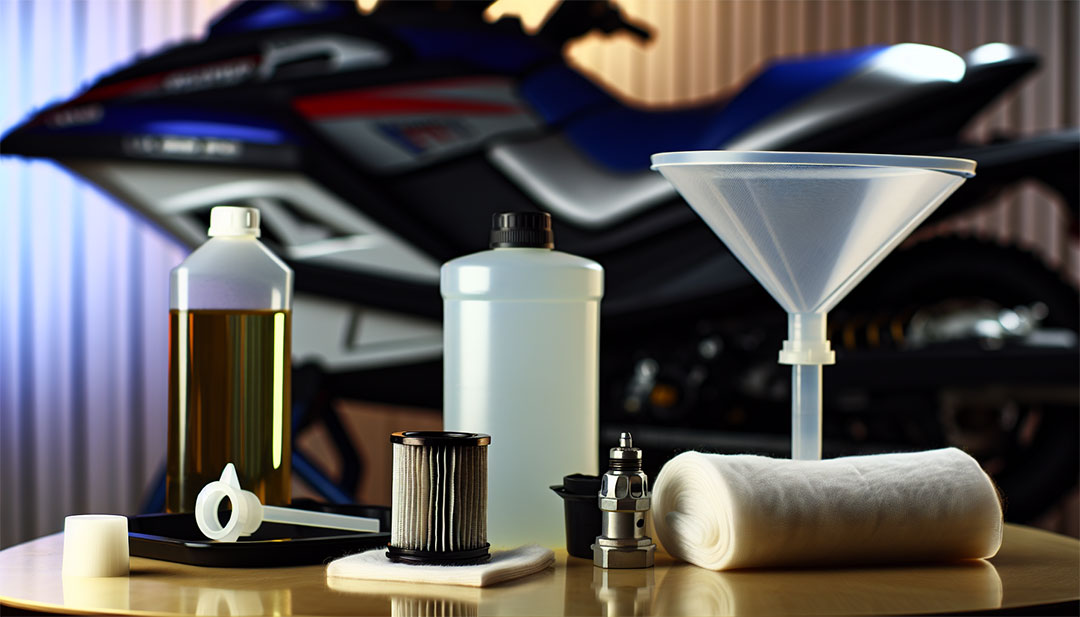Rev Up Your Ride: How to Tune Up a Jet Ski for Optimal Performance
Looking to optimise your jet ski’s performance? A regular tune-up is key. This article provides you with detailed, easy-to-follow guidance on how to tune up a jet ski. From engine refinement to electrical system checks, we cover the essentials to keep your craft in top condition—so you can focus on the thrill of the ride.
Key Takeaways
-
Regular jet ski maintenance, including engine oil changes every 100 hours or annually and replacing spark plugs, is crucial for optimal performance and rider safety.
-
Proper care of the fuel system with regular replacement of the fuel filter and application of fuel stabiliser ensures an uninterrupted fuel supply and prevents engine issues, especially when stored.
-
A comprehensive jet ski tuning up should include checking and maintaining the cooling system, drive line, pump, electrical systems, and the hull to prevent overheating, corrosion, and other potential damages.
Understanding Jet Ski Tuning Basics
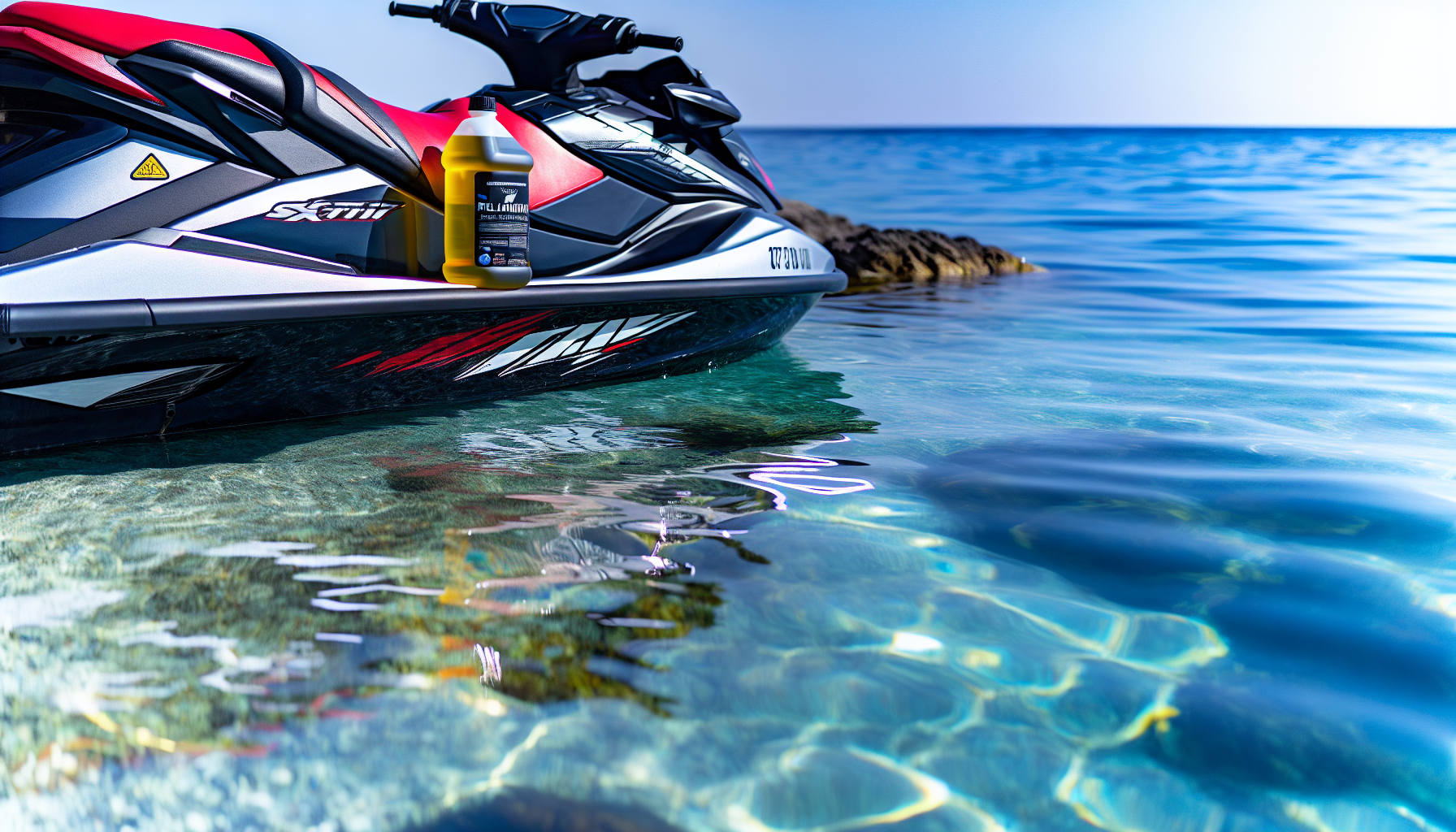
You might be thinking, “Why should I bother with regular maintenance? I just want to ride!” Well, consider this: a well-maintained jet ski not only performs better but also lasts longer. Whether you’re a casual weekend rider or an adrenaline junkie who craves speed, keeping your jet ski in top form is an investment that pays off handsomely in the long run.
Key maintenance tasks should be addressed either every 100 hours of riding or annually, whichever comes first. If you’re unsure about any specific maintenance procedures for your jet ski model, your owner’s manual is your best friend. It provides guidance on everything from cleaning your jet ski to maintaining the engine compartment.
Remember, maintaining your jet ski, a type of personal watercraft, isn’t just about preserving its performance—it’s also about ensuring your safety on the water when riding jet skis.
Beginning with the Engine: Spark Plugs and Oil Change
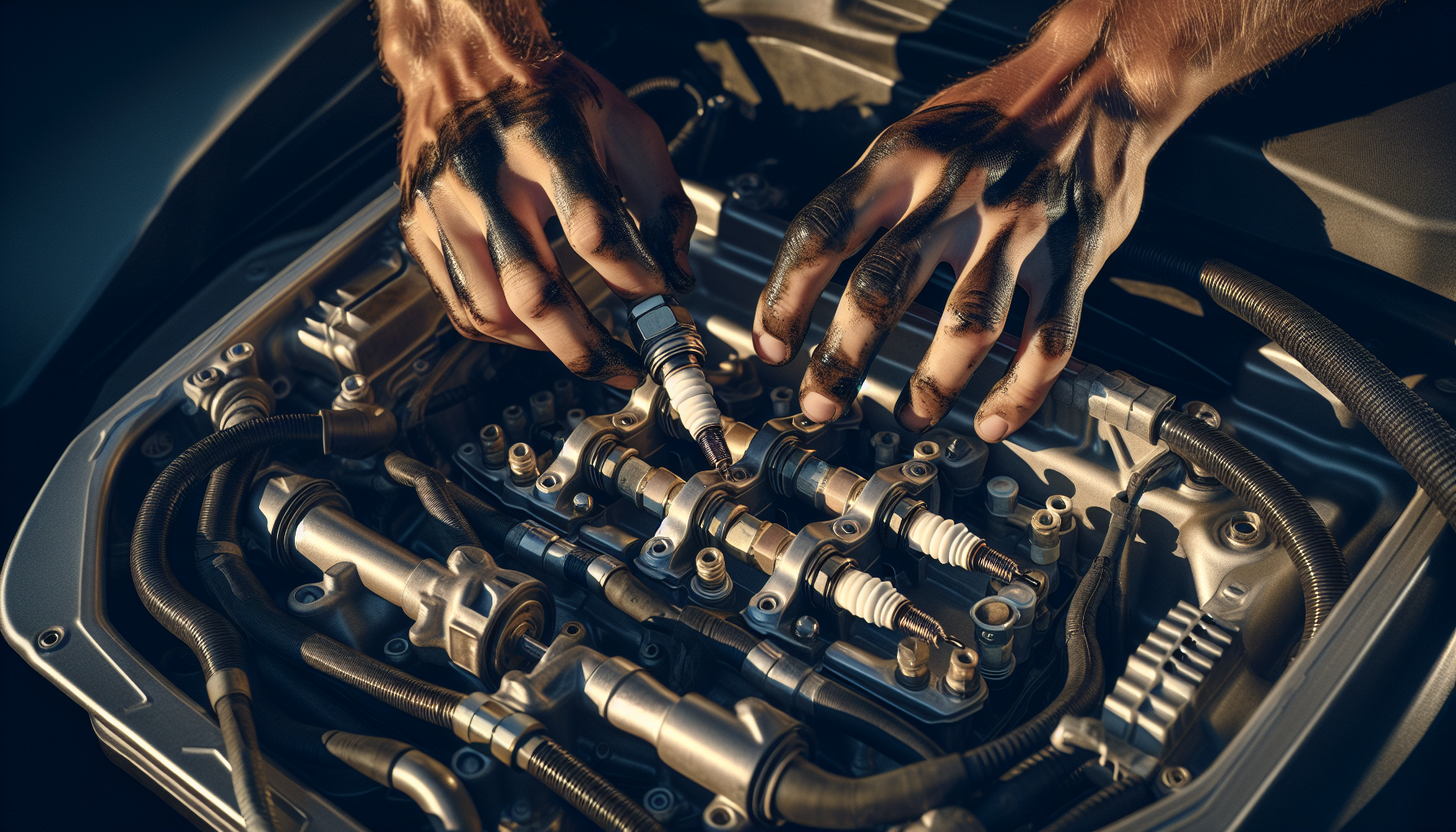
Starting with the engine, the heart of your jet ski, Two key components need your attention here: the spark plugs and the oil. Changing your engine oil regularly helps preserve engine health. Old oil contains contaminants that can harm your engine, while fresh oil ensures smooth operation. The spark plugs also play a significant role, as they are responsible for igniting the fuel-air mixture in your engine. Old or damaged spark plugs can cause various problems, including difficulty starting the engine and reduced performance.
Replacing Spark Plugs
Let’s consider the importance of spark plugs in more detail. These little devices play a significant role in your engine’s operation, and replacing them regularly ensures your engine runs smoothly. Depending on your riding frequency, it’s advisable to replace spark plugs every couple of years or even annually for those logging extensive hours on the engine.
But how do you go about replacing them? You’ll need a standard plug socket, a 12” extension with a ratchet, and a torque wrench. Sound complicated? Don’t worry! There are detailed guides available to help you through the process.
Changing Engine Oil
Next up is the engine oil. Changing your engine oil regularly is a key aspect of jet ski maintenance. It’s recommended to change the oil and filter at least once a year. Not sure what oil to use? The recommended oil for jet ski engines is 10W-40 4-stroke marine engine oil.
As for the process of changing the oil, it involves the following steps:
-
Warm up the engine
-
Remove the old oil
-
Replace the oil filter and o-rings
-
Add new oil
-
Check for oil leaks
A typical jet ski engine requires approximately 4.2-4.4 quarts of oil. See our guide on an oil change on Jet Skis
Fuel System Refresh
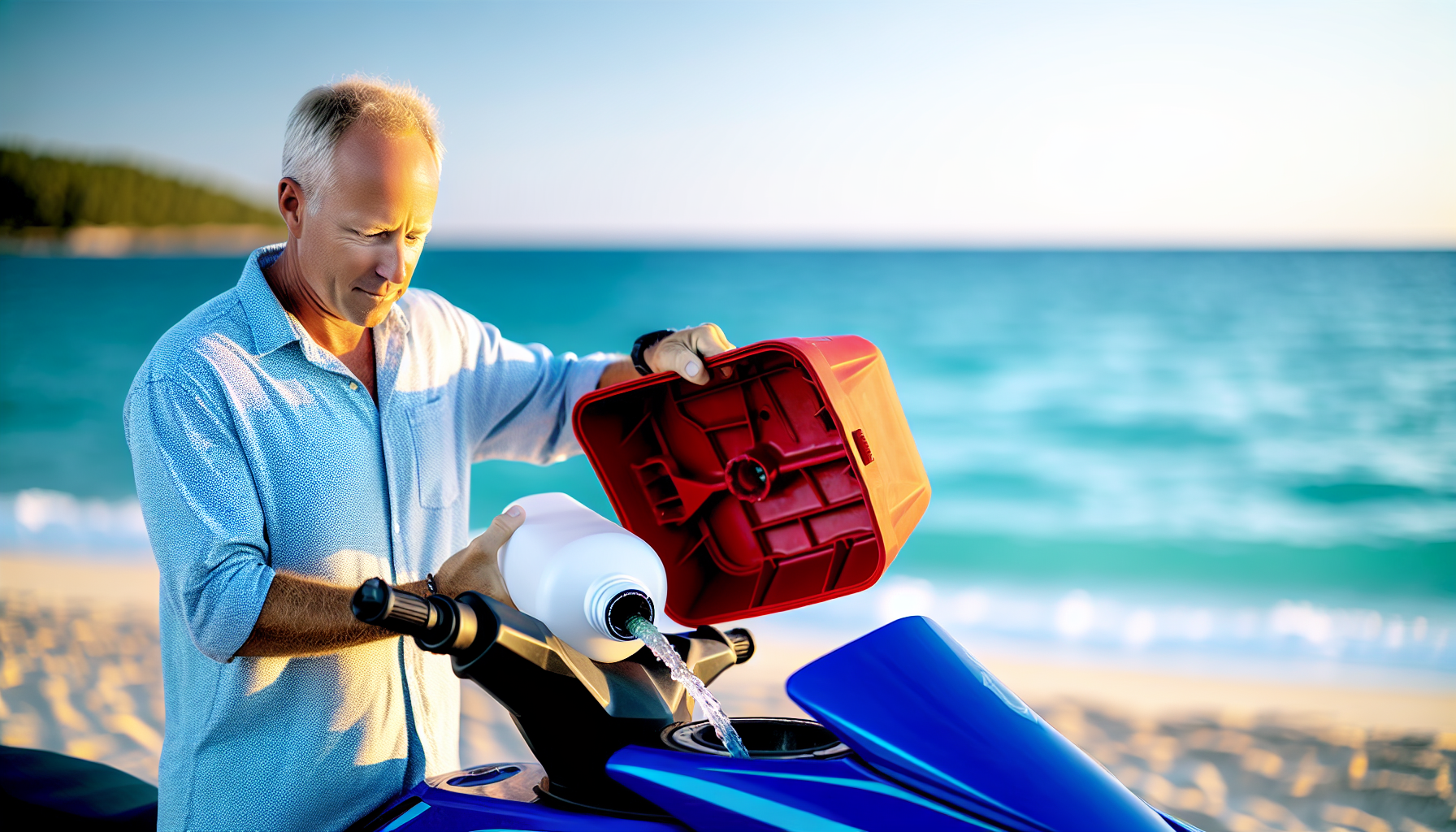
Shifting focus from the engine, we consider the fuel system. Two key components here need your attention: the fuel filter and the fuel stabiliser. The fuel filter needs to be replaced regularly to prevent clogging and ensure an uninterrupted flow of fuel to the engine. Additionally, maintaining the fuel tank is essential for a healthy fuel system.
On the other hand, adding fuel stabiliser to your jet ski is important, especially when it’s stored for extended periods. The stabiliser prevents fuel degradation, safeguarding against potential engine issues.
Replacing the Fuel Filter
Let’s examine the fuel filter more closely. This component plays a pivotal role in ensuring that the fuel flowing to your engine is clean and free from any debris that could cause damage or hinder performance.
The process of replacing the fuel filter involves draining any settled fuel from the filter and then replacing it with a new one. It is a fairly inexpensive process, but it can make a significant difference in your jet ski’s performance.
Adding Fuel Stabiliser
Following this, we will discuss fuel stabiliser. This additive is particularly important if you store your jet ski for extended periods without use. The stabiliser prevents fuel from deteriorating and causing potential engine problems.
To add the fuel stabiliser, follow these steps:
-
Check the instructions on the product label to determine the correct amount.
-
Open the gas tank.
-
Add fuel stabiliser by pouring it into the gas tank.
-
Close the gas tank.
Remember, prevention is better than cure, and using a fuel stabiliser is an easy way to prevent potential engine issues.
Cooling System Care
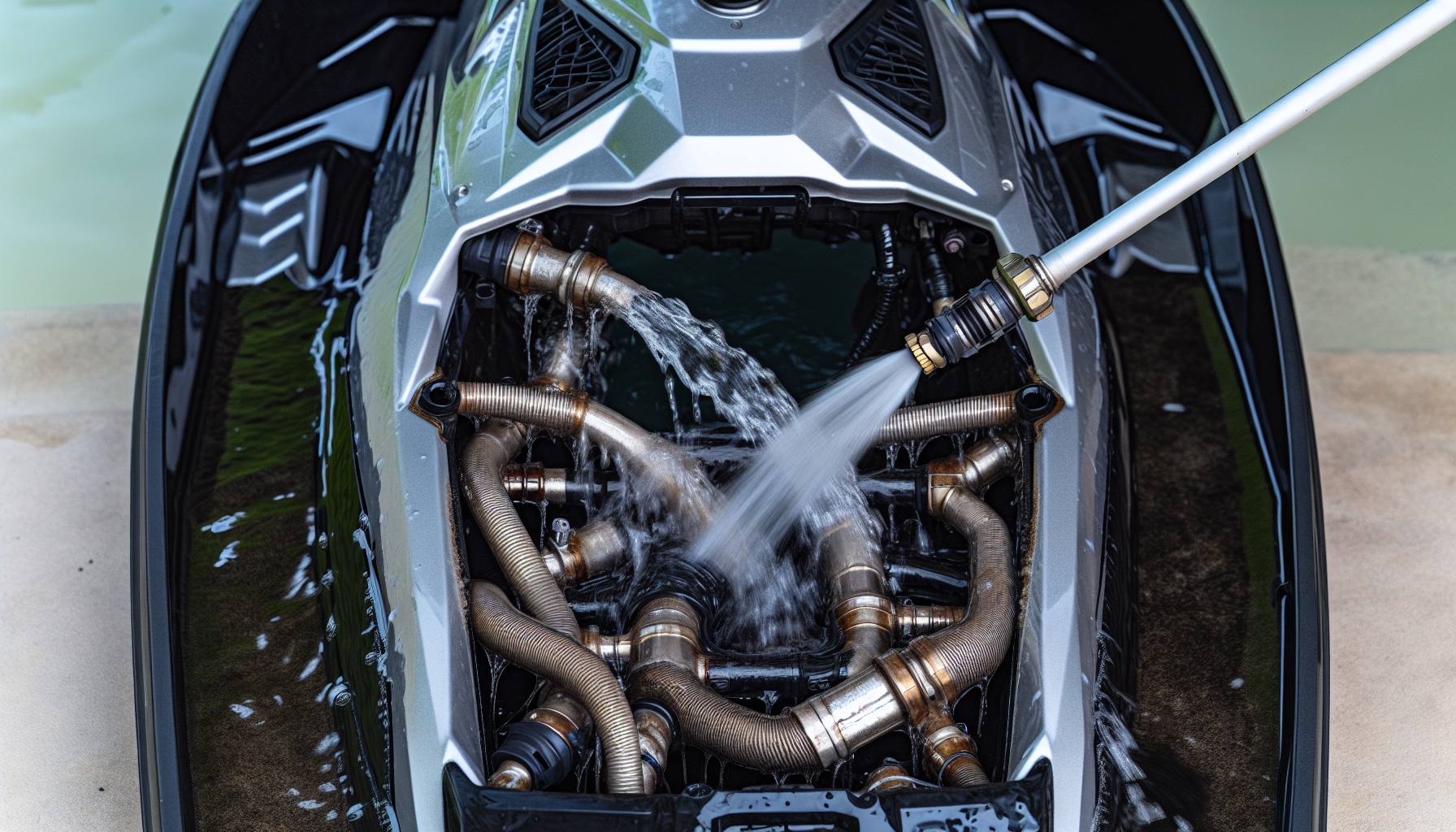
Next, we will discuss the cooling system. This system is key to preventing your engine from overheating. Regular maintenance of the cooling system involves flushing it and inspecting for leaks and blockages.
Regular flushing helps remove any debris that could cause blockages, while regular inspection helps catch any potential leaks early, preventing damage to your engine.
Flushing the Cooling System
The process of flushing the cooling system involves running water through the intake, closed cooling system, and pump to remove any debris such as salt, sand, and algae. This process is essential for maintaining the performance of your jet ski and preventing potential damage to the engine. It’s also an opportunity to inspect the system for any leaks or abnormalities.
Inspecting for Leaks and Blockages
Inspecting your cooling system regularly for leaks and blockages is another important maintenance task. This involves checking the system for any signs of leaks or blockages and taking appropriate action if any are found.
Regular inspections can help prevent serious damage to your jet ski and ensure it continues to operate at its best.
The Drive Line and Pump Inspection
Now, we focus on the drive line and pump. Regularly inspecting these components and maintaining them properly can help ensure the smooth operation of your jet ski. Key aspects of this maintenance include checking the pump oil and lubricating the bearing fittings.
Checking the Pump Oil
The pump oil plays an important role in lubricating the bearings and cooling the pump. It’s recommended to check the pump oil annually and change it if it’s dirty or low.
Checking the pump oil regularly can help maintain your jet ski’s performance and prevent possible engine damage.
Lubricating Bearing Fittings
Lubricating the bearing fittings is another important maintenance task. This process involves greasing all bearing fittings and seals to ensure they move smoothly and don’t wear out prematurely.
Regular lubrication can help prolong the life of these components and keep your jet ski running smoothly.
Jet Ski Electrical Systems Check
Now, we focus on the electrical system. This system is responsible for starting your engine, powering your lights, and running any other electrical features your jet ski might have.
Regular checks of the electrical system can help prevent problems and ensure your jet ski is ready to hit the water whenever you are.
Battery Care
The battery is a key part of your jet ski’s electrical system. Keeping it in good health can help prevent a host of problems, from difficulty starting your engine to electrical issues. It’s recommended to check your battery regularly and replace it before it depletes completely.
Inspecting Electrical Connections
In addition to the battery, it’s also important to inspect the electrical connections in your jet ski. Corrosion or damage to these connections can lead to a host of problems, from poor performance to electrical failure. Regular inspection can help catch any issues early and prevent serious damage to your jet ski.
Final Touches: Hull and Body Maintenance
Lastly, we should not overlook the hull and body of your jet ski. These components, often overlooked, play a significant role in your jet ski’s performance and longevity.
Regular maintenance of the hull and body includes cleaning the exterior and protecting the hull.
Cleaning the Exterior
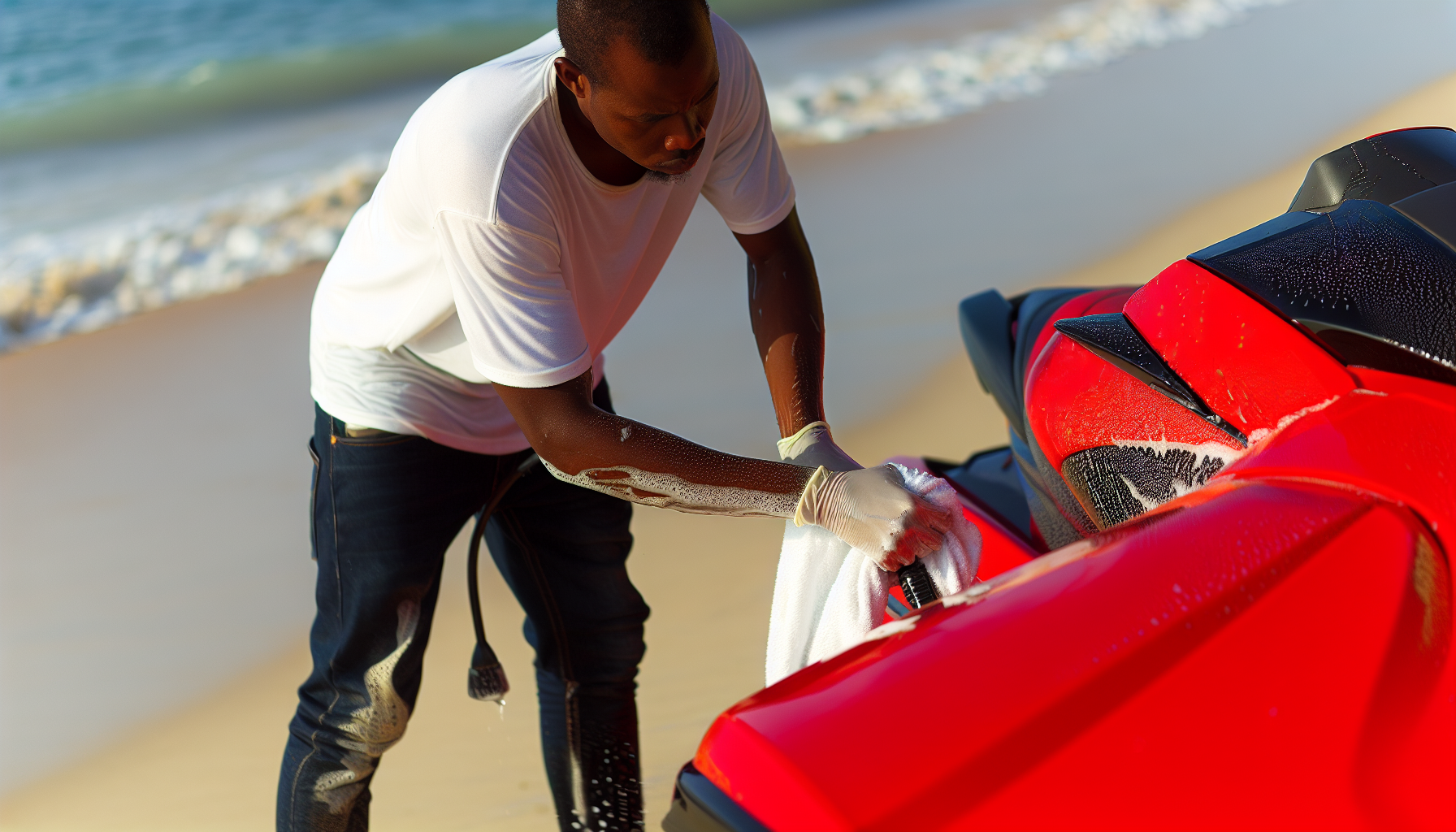
Cleaning the exterior of your jet ski not only keeps it looking great but also helps prevent corrosion and staining. This involves cleaning the jet ski completely after each ride, using a suitable cleaner to remove any dirt or salt, and drying it with a microfiber cloth.
Protecting the Hull
Protecting the hull of your jet ski is another important aspect of maintenance. This involves storing your jet ski properly when not in use, using a PWC lift to prevent water damage, and regularly inspecting the hull for any signs of damage.
Proper hull maintenance can help prolong the life of your jet ski and keep it looking great for years to come.
Preparing for the Water: Pre-Ride Checklist
Before you hit the water, ensure your jet ski is ready to go. This involves checking various components, from the fuel and oil levels to the condition of the hull and engine.
A pre-ride checklist can help ensure your jet ski is in good shape and ready for a day of fun on the water, including the use of a jet ski lift.
Going the Extra Mile: Aftercare Post Ride
After riding for the day, it’s time to tend to your jet ski to prepare it for your next adventure. This involves flushing the engine, cleaning the exterior, and storing your jet ski properly.
Regular aftercare can help prolong the life of your jet ski and ensure it’s always ready to hit the waves.
Summary
In conclusion, the performance of your your jet ski is not just about cleaning and storing it properly. It involves regular checks of various components, from the engine and fuel system to the cooling system and electrical connections. By taking the time to maintain your jet ski, you can ensure it performs at its best and lasts for many years of fun on the water.
Frequently Asked Questions
What does a jet ski tune up consist of?
A jet ski tune-up typically involves changing the engine oil and oil filter, replacing spark plugs, lubricating moving parts, and applying grease to seals and bearings. Consult your owner's manual for specific servicing instructions.
What maintenance does a jet ski need?
To keep your jet ski in good condition, make sure to annually change the engine oil and filter, drain and replace pump oil, add grease to seals and bearings, and lubricate all parts. More info in our Jet Ski Maintenance Guide.
How much is a tune up on a jet ski?
A tune-up on a jet ski can cost around £135.50, including NGK spark plugs and VAT. Keep in mind that prices may vary based on the specific type of jet ski you own.
Can you tune a jet ski?
Yes, a jet ski can be tuned using a jet ski fuel tuner to improve its speed, power, and efficiency.
How often should I replace the spark plugs in my jet ski?
You should replace the spark plugs in your jet ski every couple of years, or annually if you use the engine extensively.

